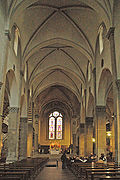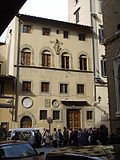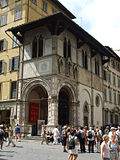Pre-historic, Greek and Roman periods
| Image | Building | Date | Architect | Notes |
|---|---|---|---|---|
 | Necropoli of Palastreto | 8th century BC | ||
 | Tomba della Mula | 7th century BC | Sesto Fiorentino | |
 | Archaeological area of Fiesole | 3rd century - 4th century BC | Fiesole | |
 | Roman Amphitheatre of Florence | 2nd century BC | ||
 | Archaeological excavations of Santa Reparata | 4th-5th century AD. | ||
 | Torre della Pagliazza | Perhaps 6th century, later 10-11th century AD |







































































































































































































































